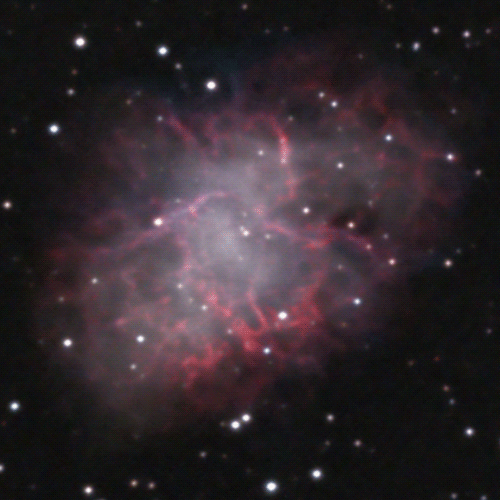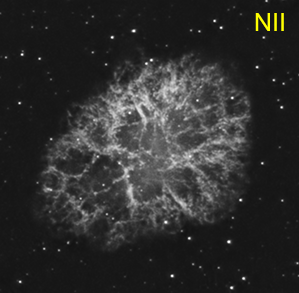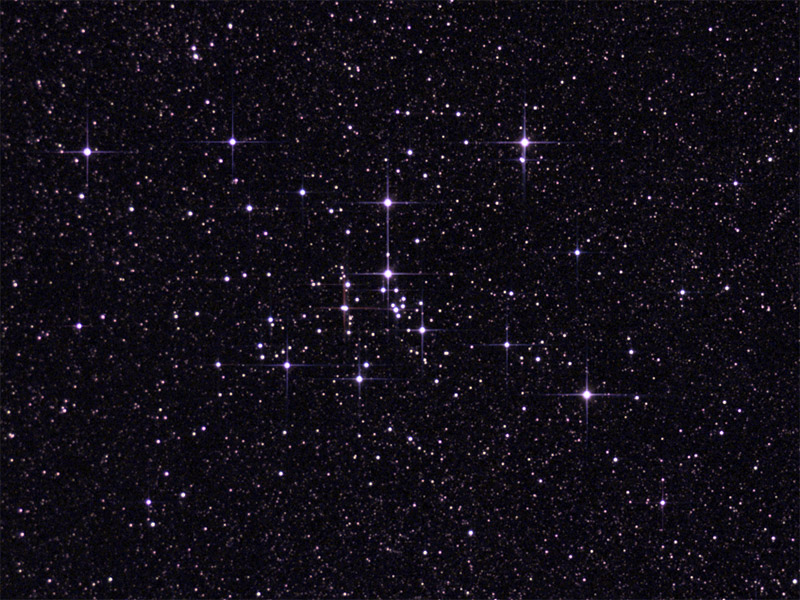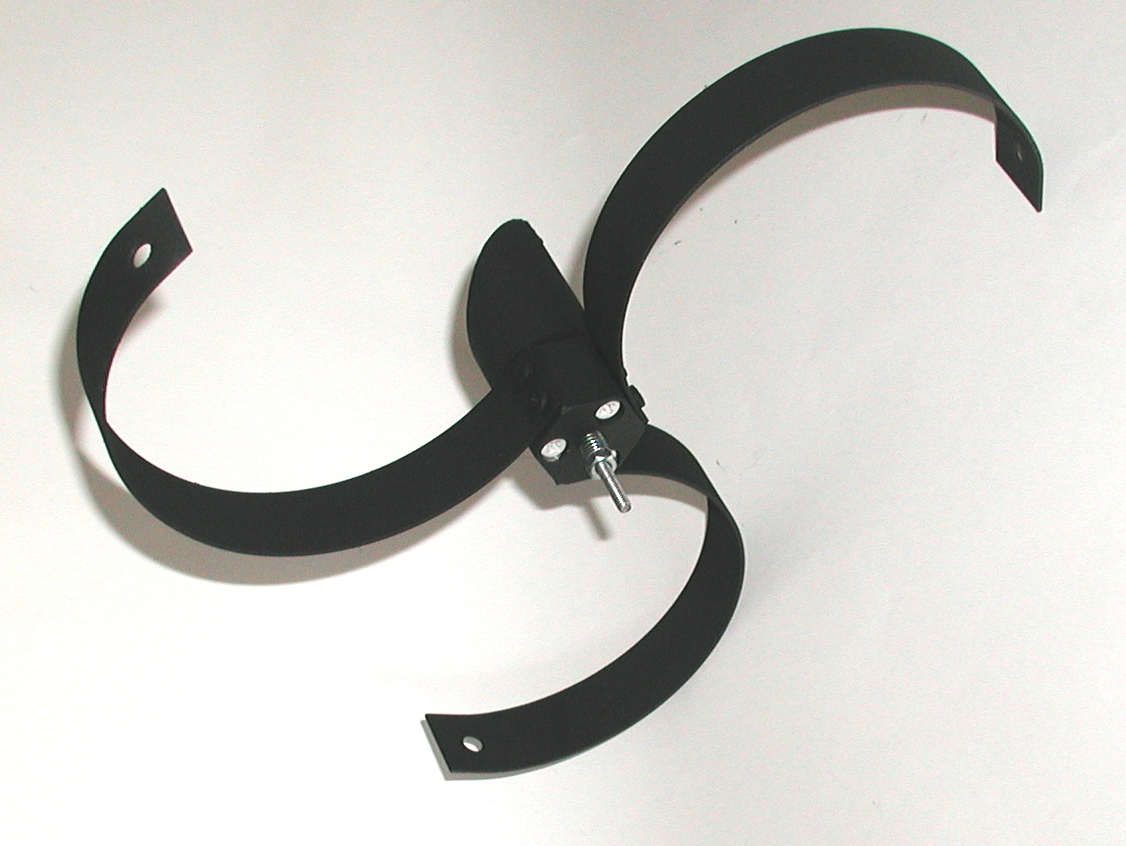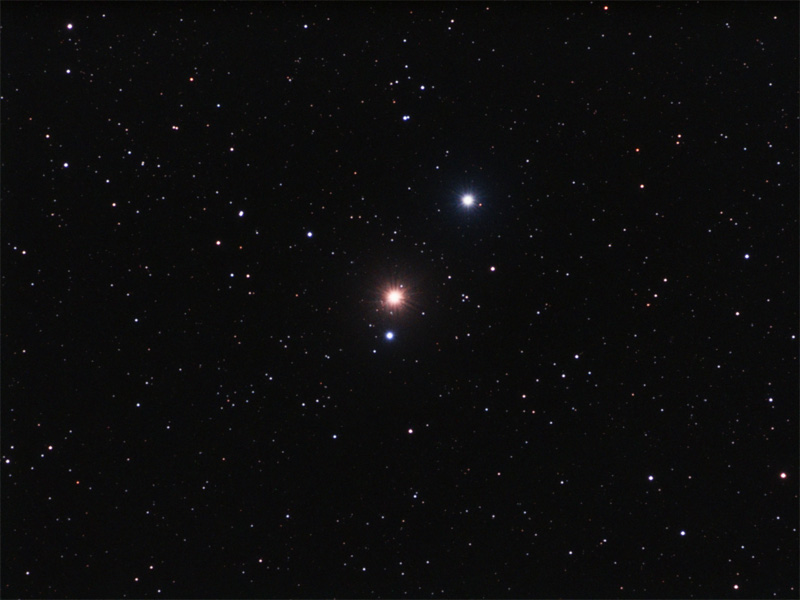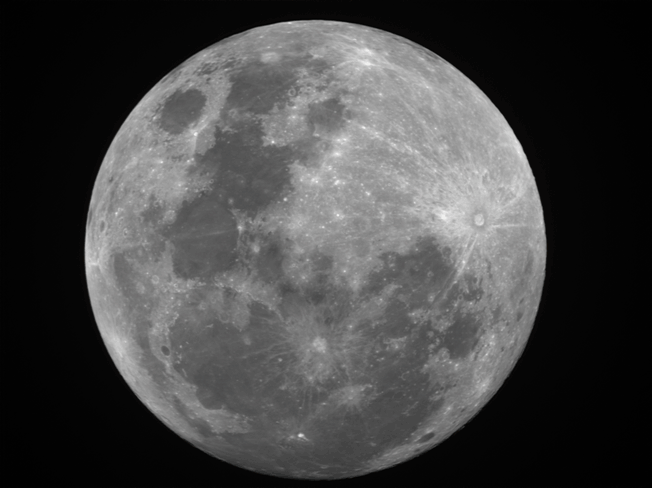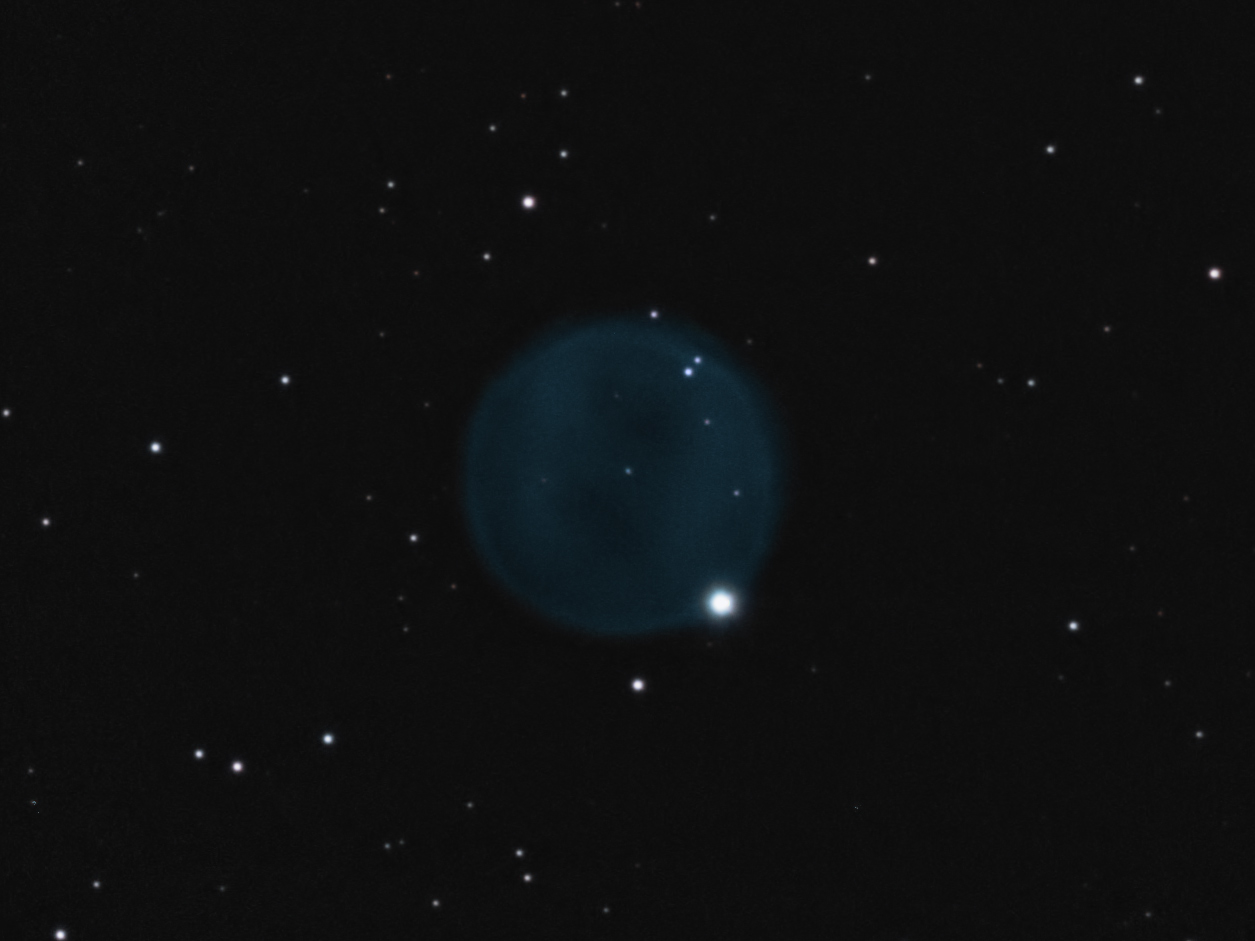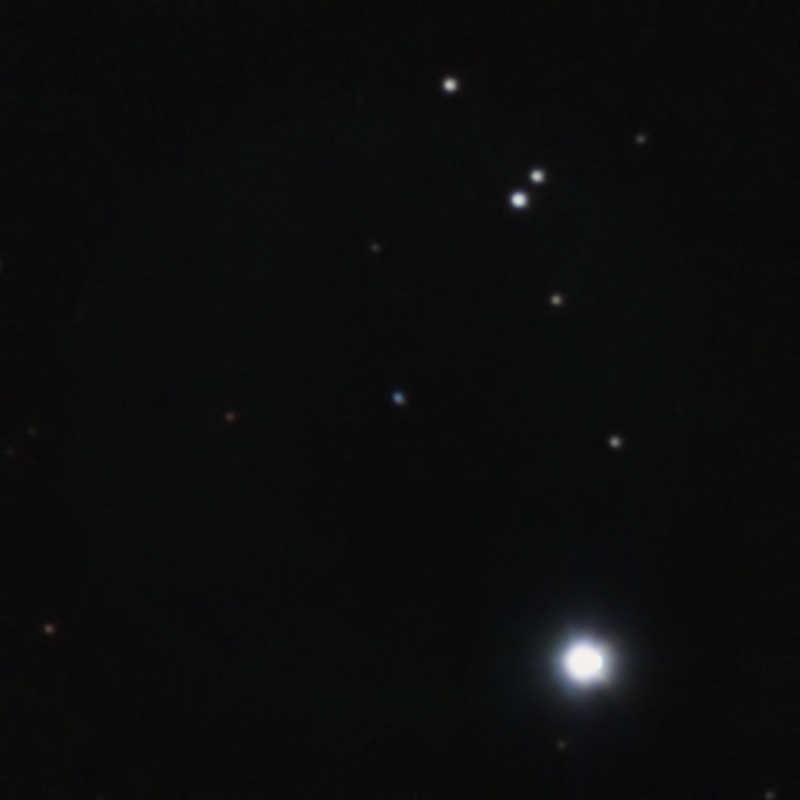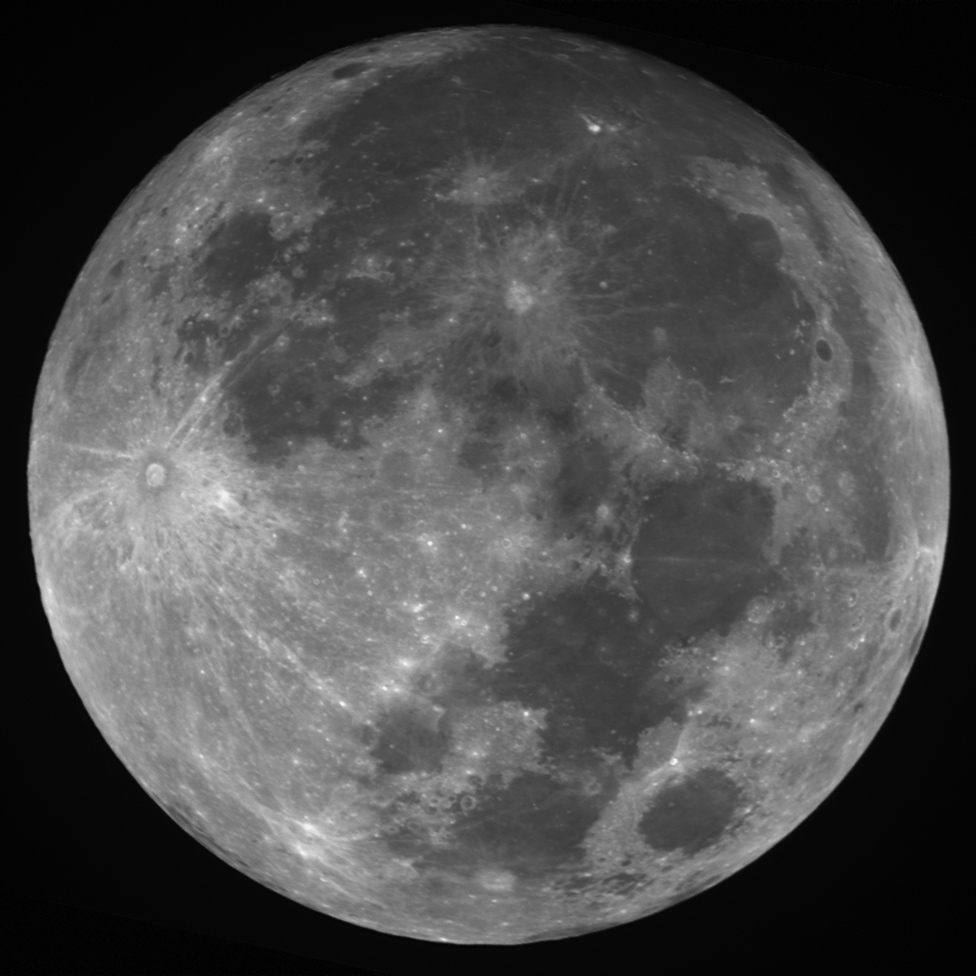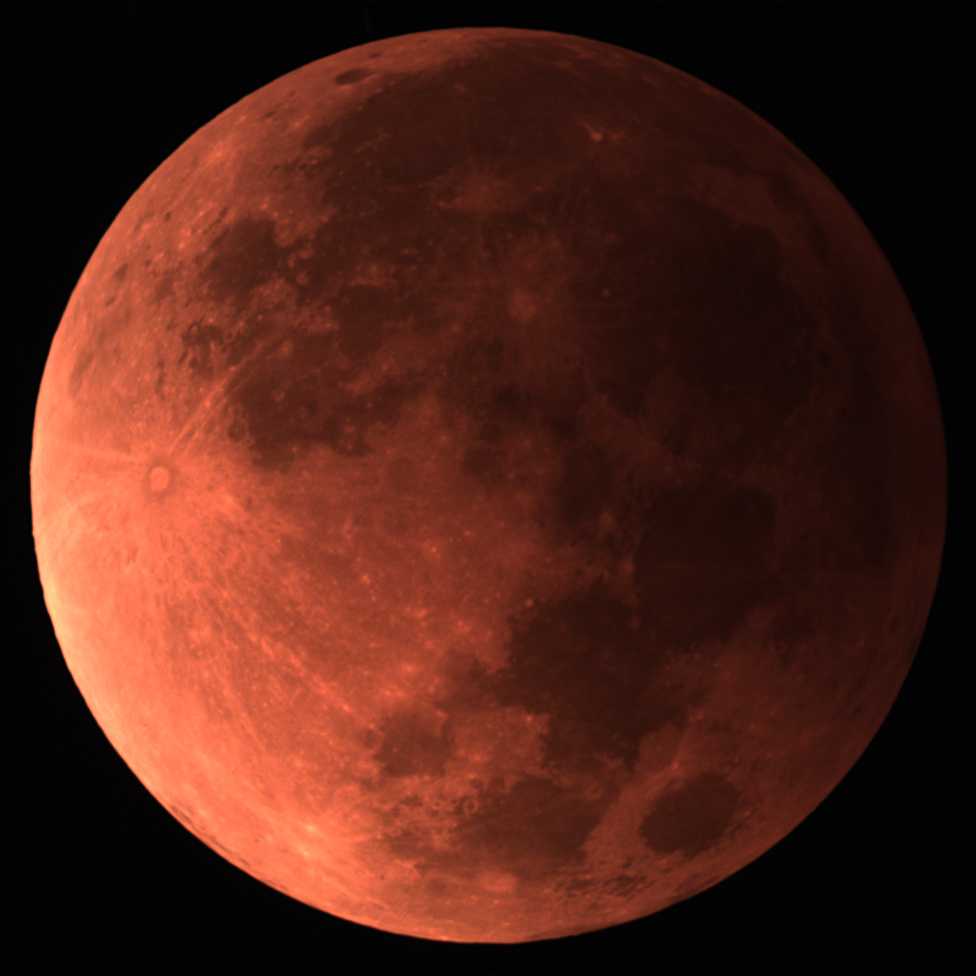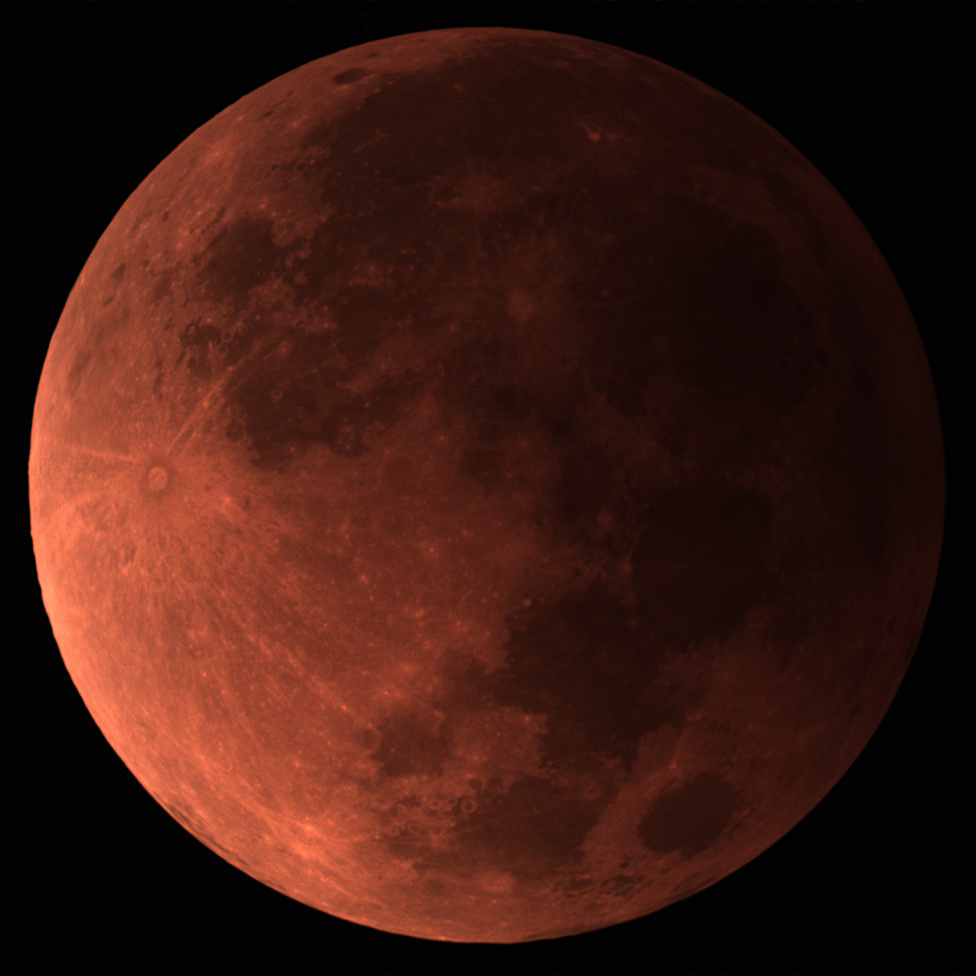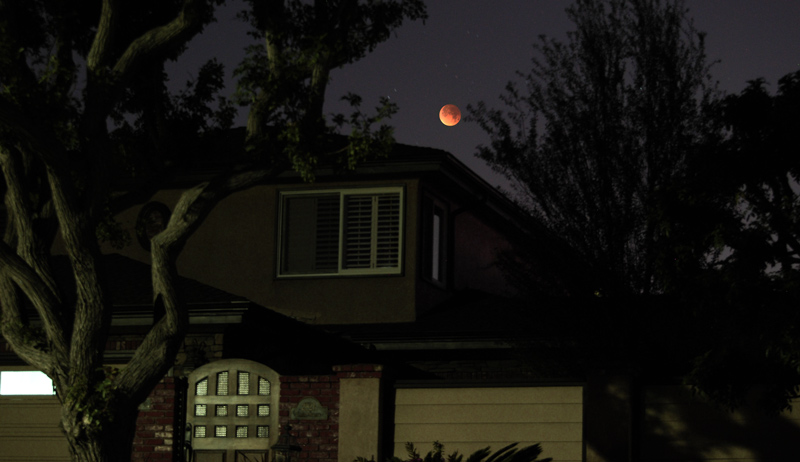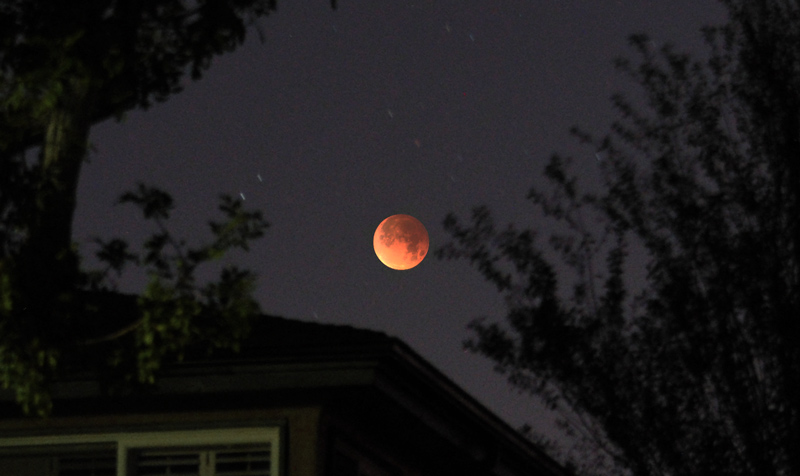it appears as though the pulsar wind is outstripping the filaments, especially mid lower left:
This is an RGB image only as my earlier images were limited.
a wider version here shows a high proper motion star lower left:
Here’s is a composite of LRGB plus a touch of OIII luminance for the outer shell and faint jet up top:
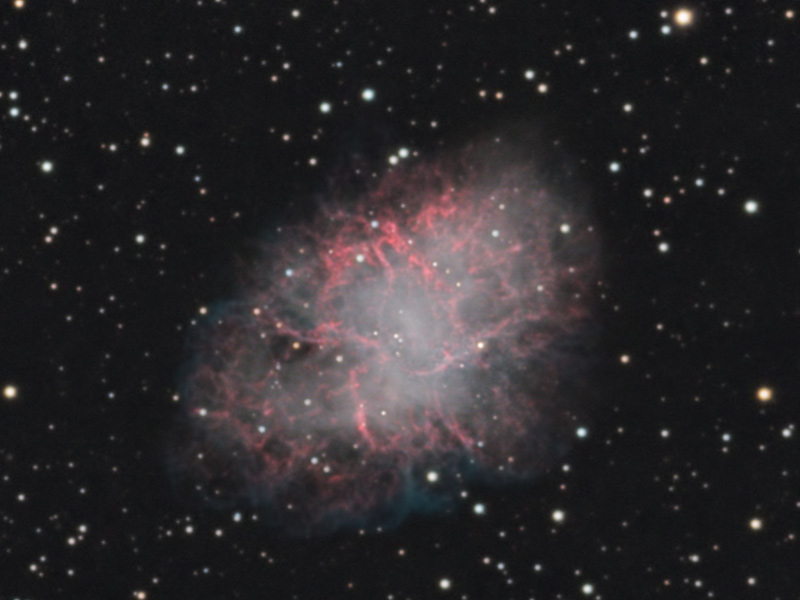 |
| M1 2016-17 LRGB OIII |
The difficulty with creating a color narrow band image is that there's no apparent rhyme or reason to the SII signal, it makes no intuitive visual sense. I tried a number of different color palettes...didn't like any of them. then i created a blink of 3 different combinations and decided it was time to stop thinking, break out the lava lamp and play some hendrix:
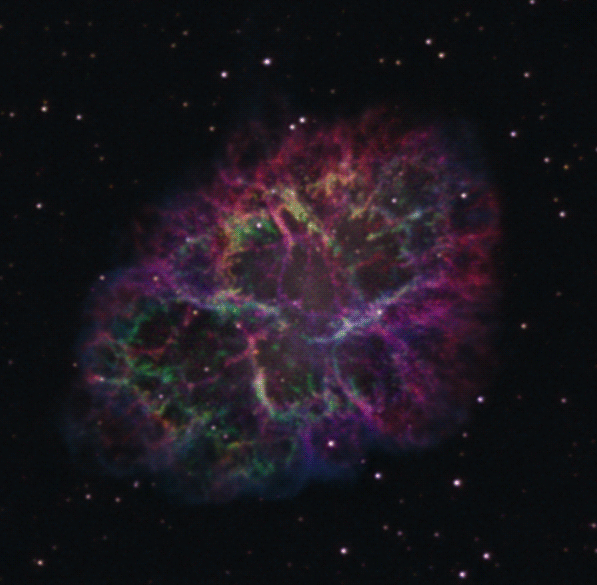 |
| Crab Nebula NII SII OIII combinations: NSO, SNO, NOS |
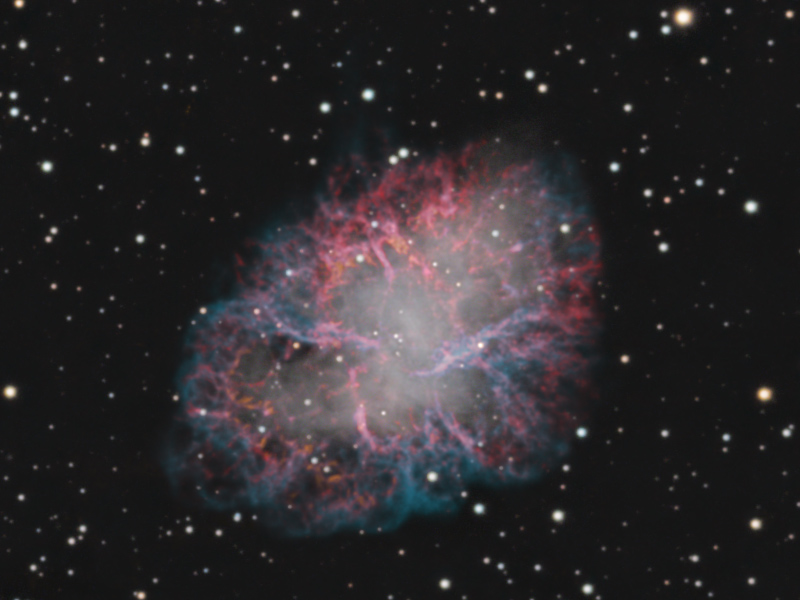 |
| Crab Nebula LRGB NII SII OIII 2016-17 |
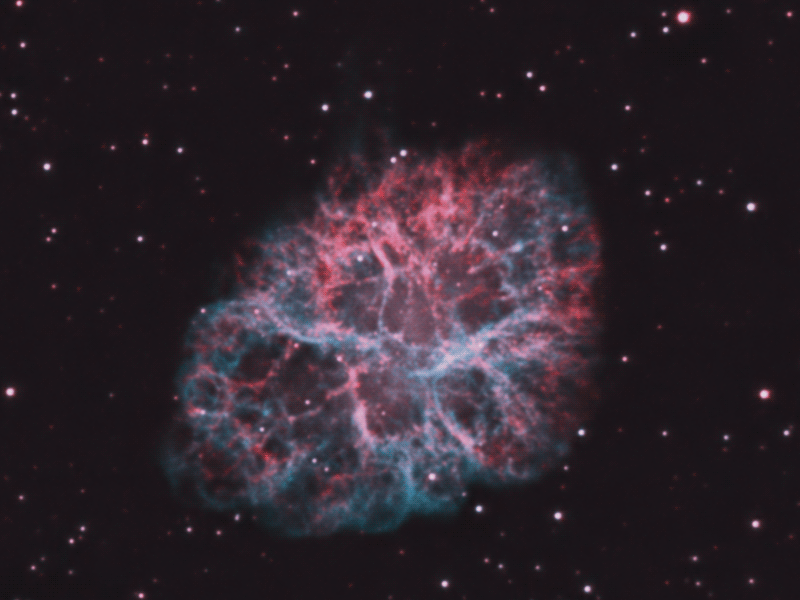 |
| Crab Nebula NII red, SII orange, OIII blue |
Large Animation File Link
Details:
2017
12/28/16-2/28/17
8" LX200R, SX Trius 694 and QSI 660 binned x2 to 0.8"/px, ASA DDM60
astrodon LRGB E SERIES GEN-II, NII 3 nm, SII 3nm, OIII 3 nm
L 239 x 1 min ;)
red 96 x 4 min, green 67 x 4 min, blue 67 x 4 min (included as pseudoluminance)
NII 19 x 20 min
SII 11 x 20 min
OIII 27 x 20 min
2015
11/26/14-3/9/15
8" LX200R, SX Trius 694 and QSI 660 binned x2 to 0.8"/px, ASA DDM60
astrodon LRGB E SERIES GEN-II, OIII 5 nm, chroma 540x50 nm filter (greenish continuum)
L 346 x 1 min ;)
red 33 x 4 min, green 22 x 4 min, blue 22 x 4 min (included as pseudoluminance)
OIII 24 x 20min
540x50 53 x 5min, 56 x 10min
2013
1/12/2013-3/4/2013
8" LX200R @ 0.6"/px, SX AO, Astrodon OIII 5nm, IDAS LPR filters SX H9/H9C
RGB(IDAS) 14x20 min, luminance 35x5 min with idas, 35x5 min unfiltered, plus RGB pseudoluminance
OIII 19x20 min
2010
12/6/2010-2/6/2011
8" LX200R, SX AO, Astrodon OIII 5nm IDAS LPR, SX H9/H9C
RGB 31x20 min, luminance 205x5 min plus RGB pseudoluminance, OIII 47x10 min binnned x2
2008
forgot the details there was too much star trailing for me to complete the initial processing.
aborted HaRGB
2006
1/2,3,5/06
nexstar 8 GPS, IDAS LPR filter, f/6.3 FR, SXV H9C
120x1 min, 240x30 sec (unguided)
